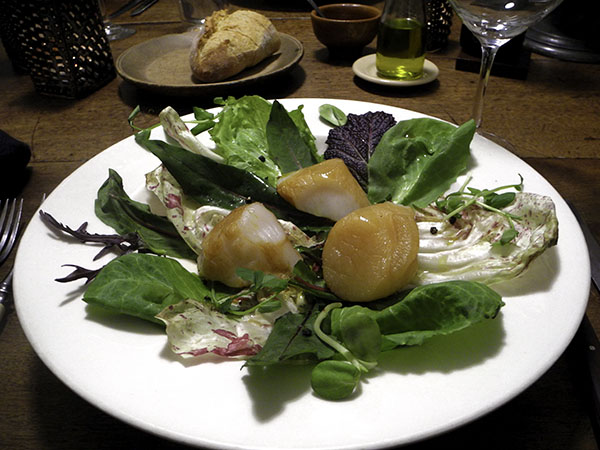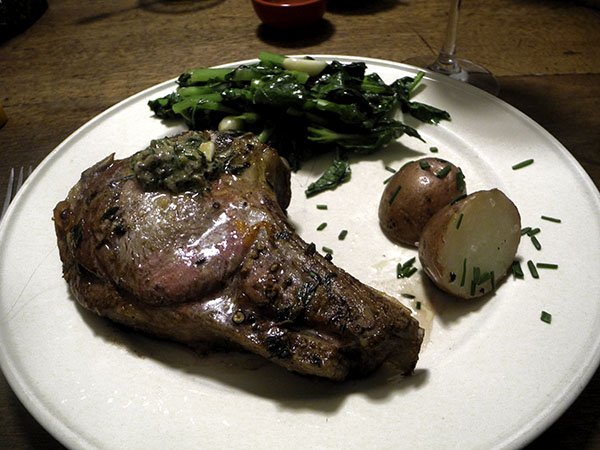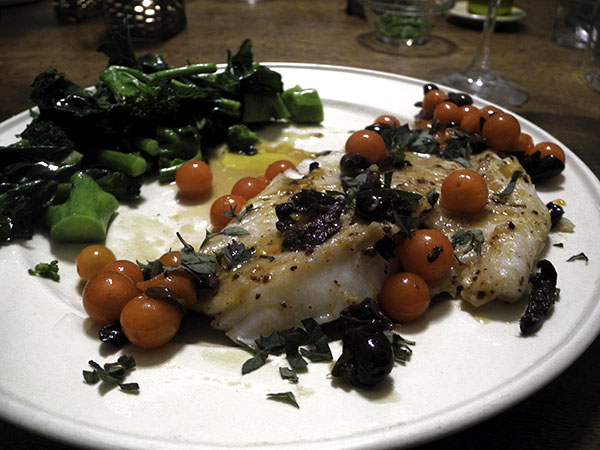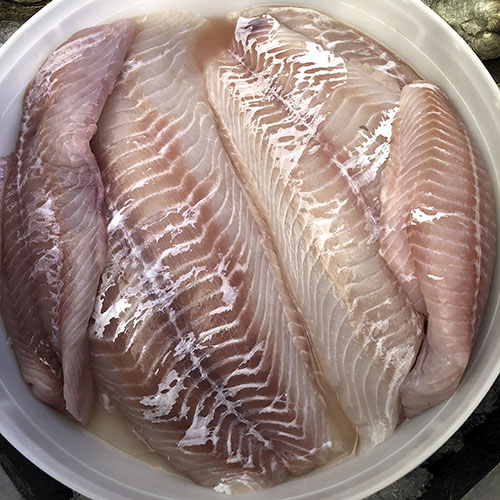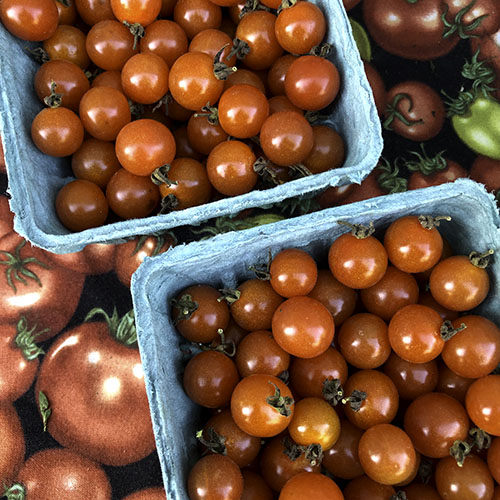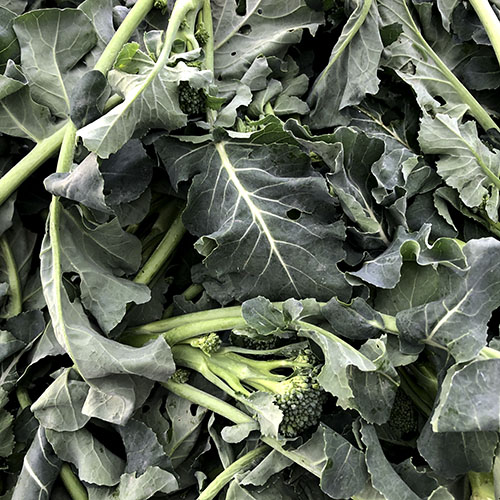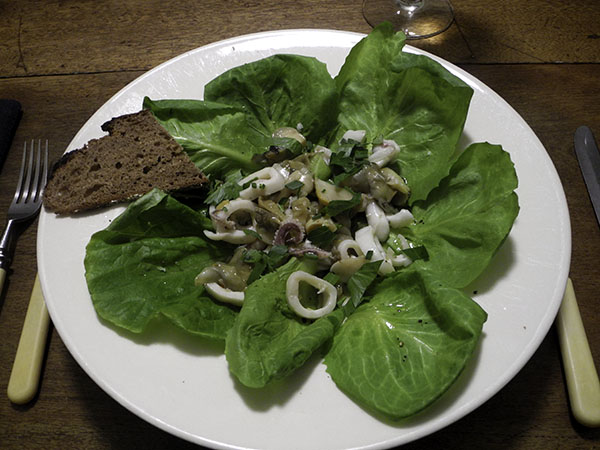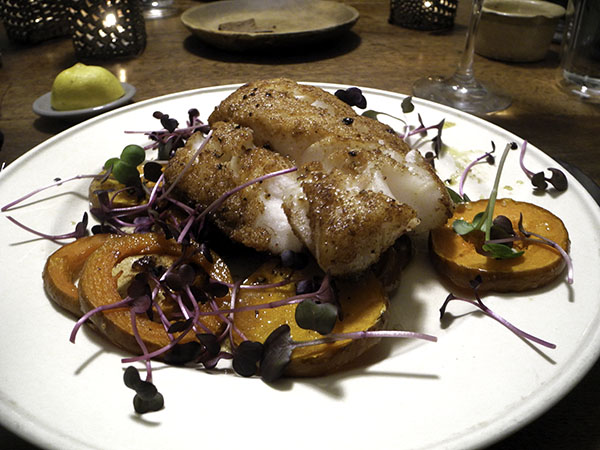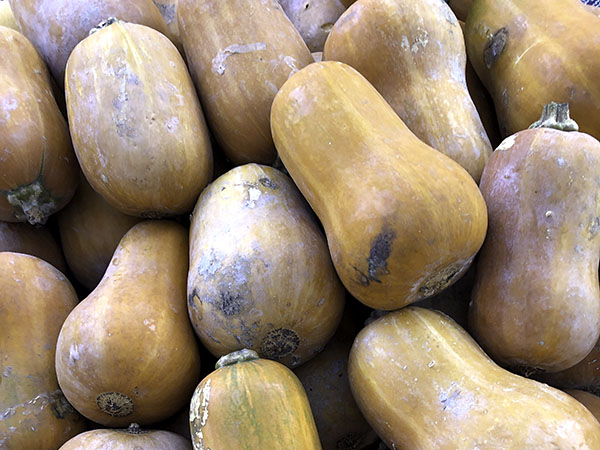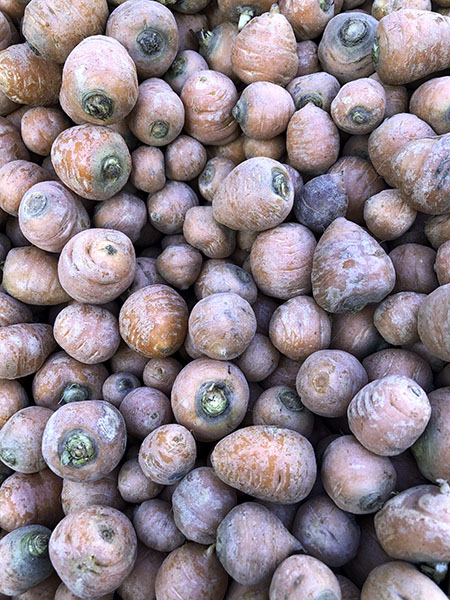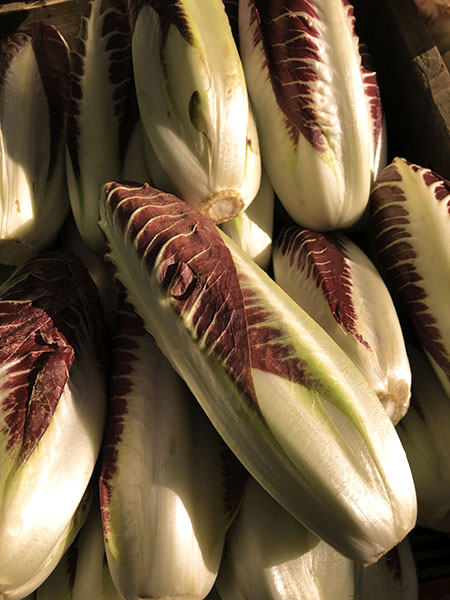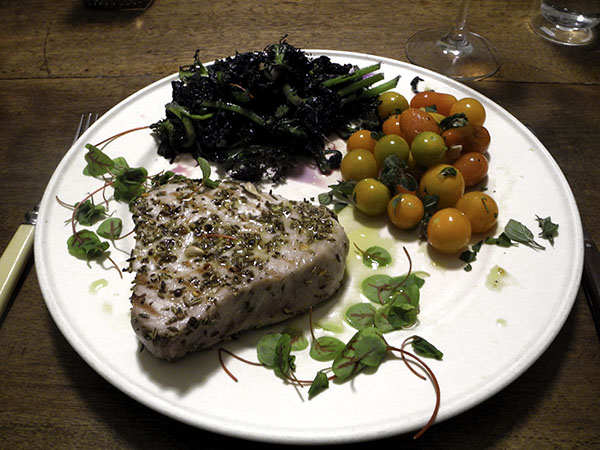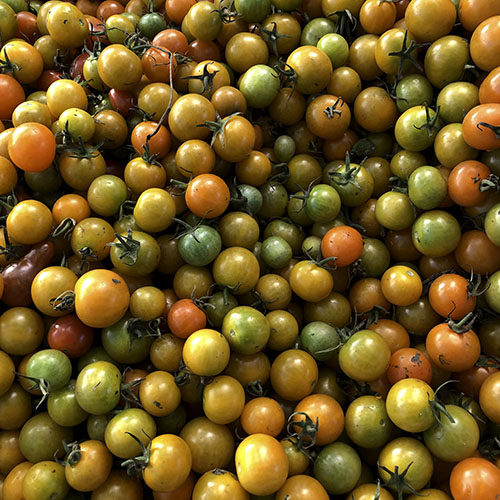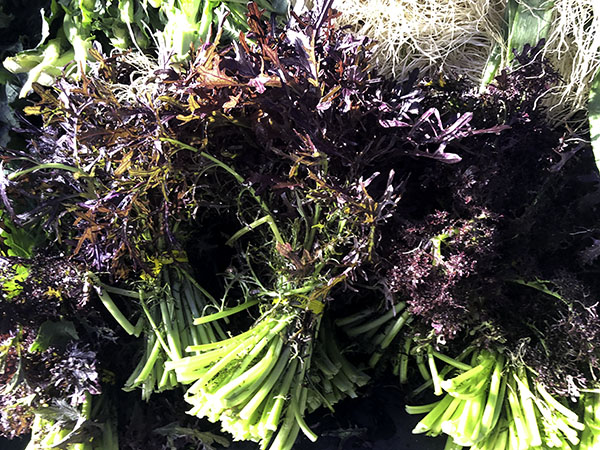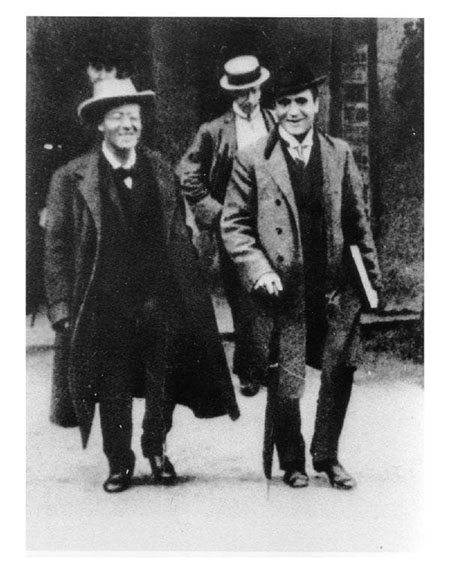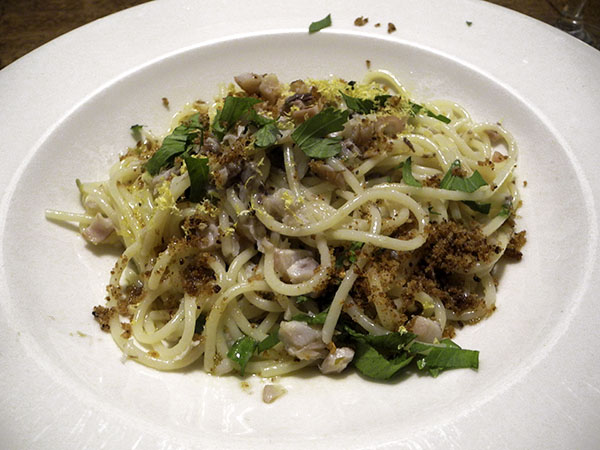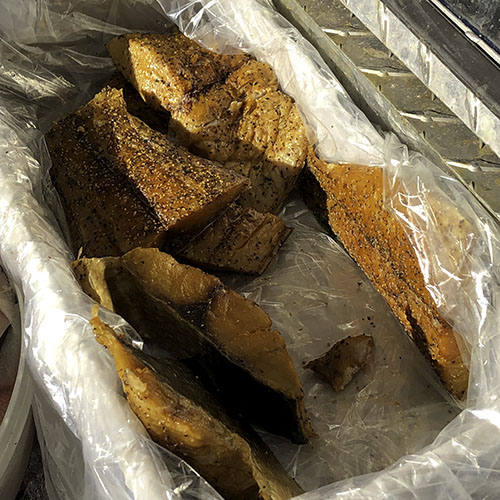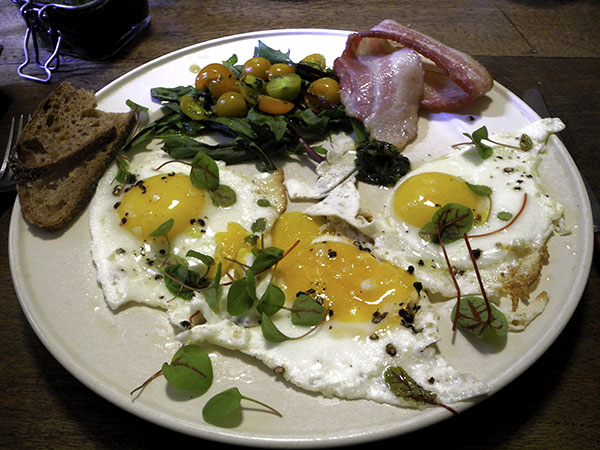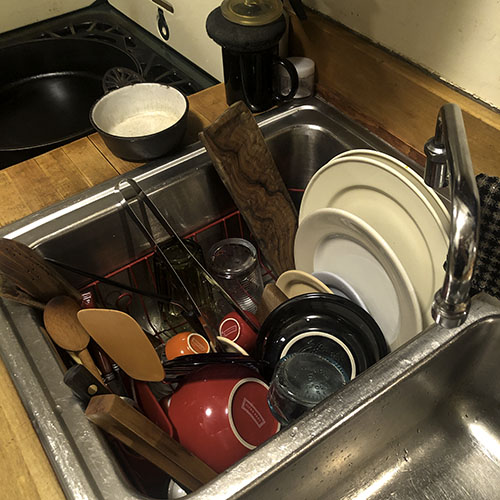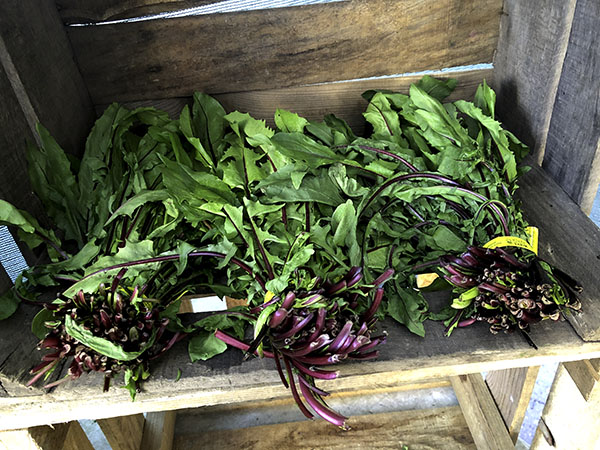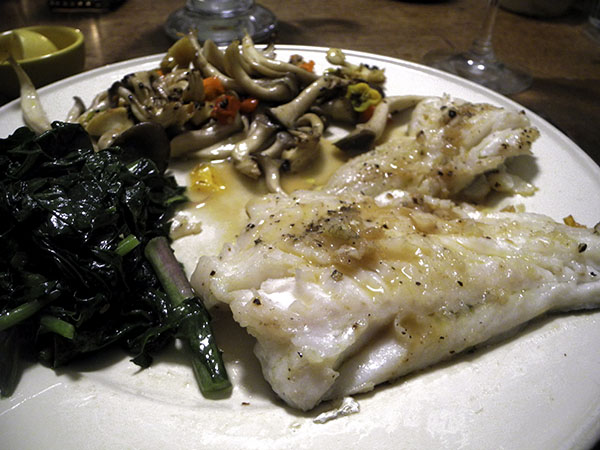
Ezra Pound
We city people have our own country ways. Haddock has arrived in our local fishers’ greenmarket stalls, and in New York City that’s almost as good a portent of wintertide‘s approach as any bellwether in the Old Farmer’s Almanac, which I bought religiously, I don’t mind saying, every year of my long sojourn in New England (always nailing the previous year’s edition to the wall inside the [inside] privy).
Also, I wasn’t to make it cleat that I myself am very fond of winter. For all I know Pound may have been as well, and only playing with the traditional English round, ‘Sumer is Icumen in‘.
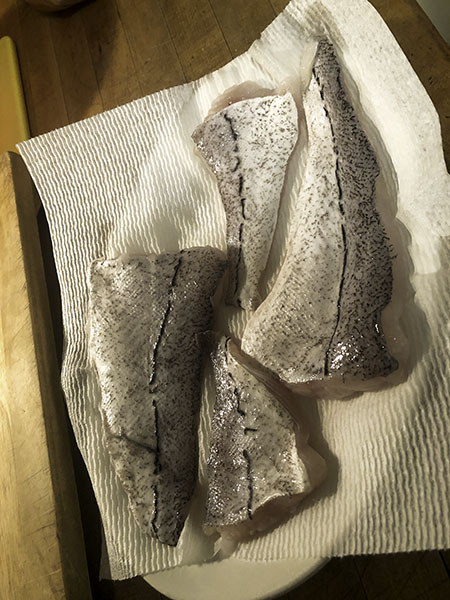


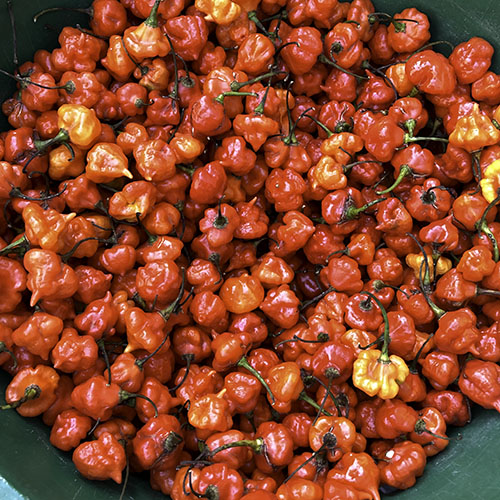
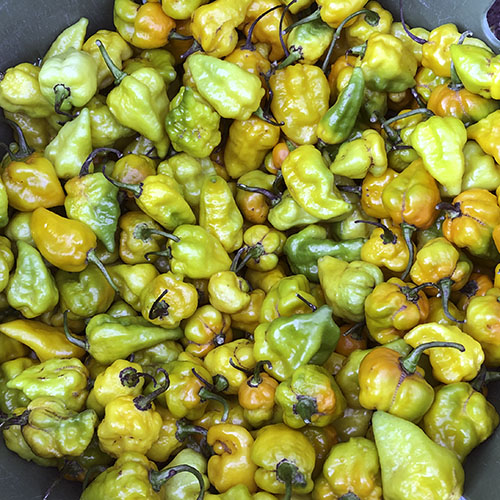
- two 8-ounce haddock fillets from P.E. & D.D. Seafood served with an accompaniment of local mushrooms, starting with separating or chopping the individual sections of 9 ounces of oyster mushrooms from Blue Oyster Cultivation (a mix of grey and yellow), sautéing them, along with 2 different kinds and colors of finely chopped small sweet seasoning peppers, aji dulce and Granada, both from Eckerton Hill Farm, over medium-high heat in a little over 2 tablespoons of olive oil inside a vintage thick-walled tin-lined copper 14-inch oval sauté pan, stirring, until softened if not browned (I had a lot of mushrooms this time, so they were too crowded, but the taste didn’t suffer), for roughly 5 minutes, all transferred to 2 warm plates (in a warm oven, door ajar), the pan wiped dry and an additional tablespoon of olive oil added, the flame turned up to medium-high and, once the oil was shimmering, two 8-ounce haddock fillets from P.E. & D.D. Seafood that had been seasoned with the fisherman’s own local salt and some freshly ground black pepper, were introduced and cooked, flesh sides down, and without moving until well browned, or for about 3 minutes, when they were carefully flipped over and cooked on the skin side until the fish was just cooked through, or about 2 minutes longer, transferred onto the plates next to the mushrooms, then about three quarters of a cup of a good low-sodium vegetable stock (using Better Than Bullion, from Whole Foods Market) was added to the same pan and cooked over high heat until reduced by at least half, the pan removed from the flame, 2 tablespoons of butter and 2 tablespoons of Chelsea Whole Foods Market organic California lemon stirred in, the sauce seasoned to taste with salt and pepper before being poured over both the fish and the mushrooms, lemon wedges served on the side [I mostly used this Serious Eats recipe, although I substituted the fresh peppers for the author’s “chili flakes”]
- half of a bunch of very sweet green kale (with an awesome texture once heated) from Norwich Meadows farm, washed several times and roughly chopped, including the stems, wilted inside a large antique copper pot in a little olive oil in which several thinly sliced cloves of ‘Chesnok Red’ garlic from Alewife Farm had first been warmed and begun to color, the greens arranged on the plates, seasoned with salt and pepper and drizzled with a little olive oil
- the wine was a California (Sonoma County/Alexander Valley) white, Jac Cole Alexander Valley Oak Fermented Chardonnay 2018, from Naked Wines
- the music was Vivaldi’s ‘Il Teuzzone’, written in Mantua in 1719, and first produced in Venice during Carnival celebrations that year, performed by Jordi Savall and the Concert des Nations; the story is “a seething tale of family rivalries and altered wills at the ancient Chinese court“

